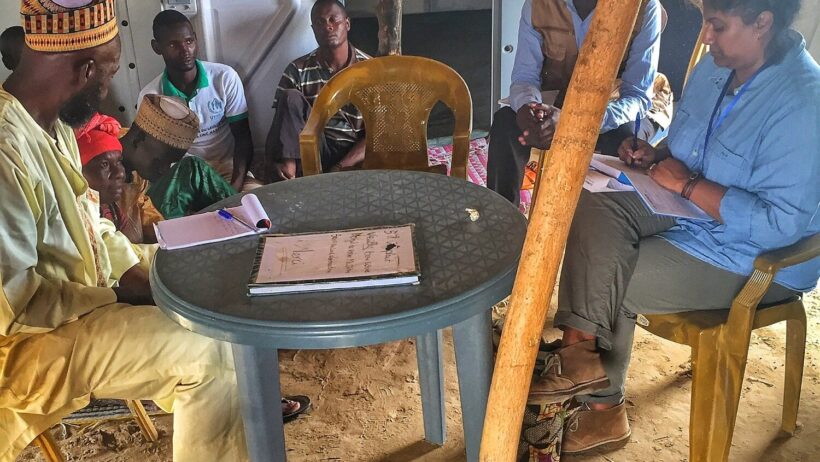In an era marked by unprecedented environmental upheaval, the phenomenon of climate refugees has emerged as a pressing issue demanding the concerted attention of the international community. Individuals displaced by climate change—be it due to rising sea levels, devastating floods, or protracted droughts—represent a group facing unique vulnerabilities. As the ramifications of climate change manifest with increasing frequency and severity, action must be taken not only to mitigate further environmental damage but also to address the humanitarian crises that ensue.
The quest to adequately support climate refugees necessitates a multi-faceted approach that combines legal recognition, sustainable practices, and comprehensive resettlement strategies. Only then can the international community begin to tackle this complex and pressing challenge effectively.
Understanding the Legal Landscape of Climate Refugees
At present, the existing international legal framework does not explicitly recognize climate refugees as a distinct category. This absence presents significant obstacles in terms of protection, resettlement, and rights. International law primarily addresses refugees fleeing persecution rather than those displaced by environmental degradation. Therefore, the first step towards properly addressing the plight of climate refugees is the establishment of a robust legal framework, one that explicitly acknowledges the status and rights of individuals forced to leave their homes due to climate-induced factors.
Developing a specialized legal status would empower climate refugees to seek asylum and gain access to support networks that are vital for their survival. It is essential for nations to collaborate and create binding agreements that not only detail entitlements but also outline the responsibilities of states to protect these vulnerable populations.
The Aesthetic Dilemma: Balancing Development and Conservation
The global architecture of governance must balance development aspirations with the necessity for ecological stewardship. In the face of climate refugee crises, there emerges a pressing need for innovative urban planning and sustainable resource management practices. Countries receiving climate refugees must strive to create environments that are both accommodating and ecologically sound, ensuring that the introduction of new communities does not exacerbate existing environmental issues.
Moreover, the aesthetic appeal of well-planned urban spaces can serve as a pivotal aspect in creating vibrant communities. The integration of green spaces, renewable energy technologies, and sustainable transportation systems can foster not only inclusivity but also a sense of belonging for displaced populations. By transforming neighborhoods into centers of resilience and sustainability, new arrivals are more likely to thrive in their new environments.
Empowering Host Communities: A Path to Integration
As climate refugees seek refuge in foreign lands, it becomes imperative for the host communities to embrace inclusivity and foster integrative practices. Providing access to resources and opportunities for social engagement can cultivate a sense of belonging and ultimately mitigate tensions that often arise during such transitions.
Education plays a crucial role in this endeavor. Programs designed to educate both climate refugees and the local population can foster understanding and empathy. Workshops that promote cultural exchange, language classes, and vocational training can serve to bridge gaps and ease friction between communities. Such initiatives not only empower refugees but also enrich the host community, turning potential adversities into opportunities for growth.
The Role of International Collaboration: A Unified Approach
In addressing the challenges posed by climate refugees, the international community must foster cooperation that transcends borders. Multilateral organizations, governments, and non-governmental organizations (NGOs) must unify their resources and expertise to respond to the growing crisis. Comprehensive global strategies, grounded in shared responsibility, must include funding mechanisms to support both the immediate needs of climate refugees and long-term sustainable development practices in their host countries.
Joint initiatives can streamline the process of resettlement and establish networks for sharing best practices, thereby enhancing the efficiency and efficacy of aid delivery. By creating global coalitions, nations can collectively address the root causes of climate-induced displacement, focusing on both adaptation strategies and mitigation efforts in vulnerable regions. This solidarity will not only lend credibility to the response efforts but also forge pathways towards more resilient global communities.
Conclusion: A Call to Action
The phenomenon of climate refugees extends beyond humanitarian issues; it encapsulates the broader implications of climate change on global stability. As environmental disruptions continue to escalate, addressing the plight of climate refugees will become increasingly urgent. It is the responsibility of the international community to wrap its arms around these vulnerable populations, ensuring their rights are recognized and their needs met.
By establishing a targeted legal framework, harmonizing development with environmental stewardship, empowering host communities, and advocating for unified international efforts, we can create a more equitable and sustainable future for all. The time for action is now. Failure to act will only perpetuate cycles of displacement and suffering for millions, undermining the very fabric of humanity.





